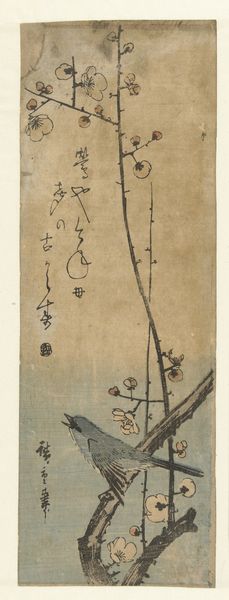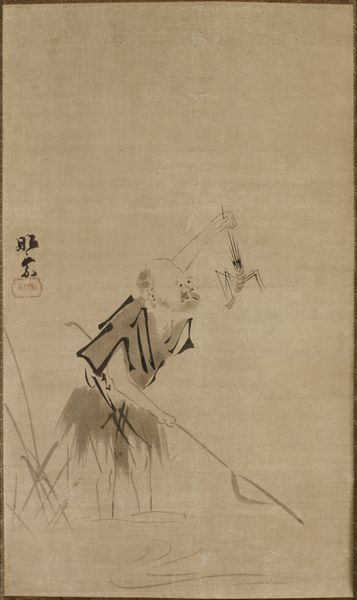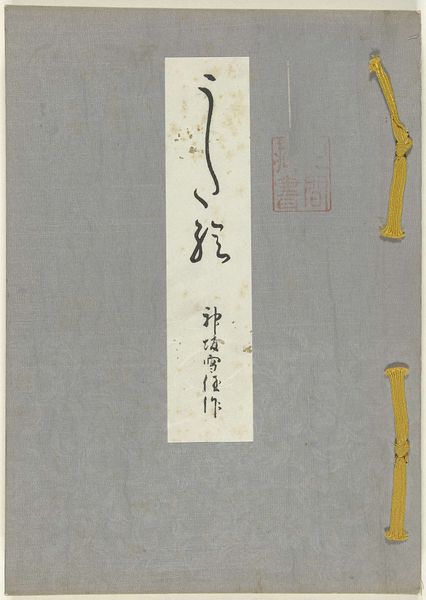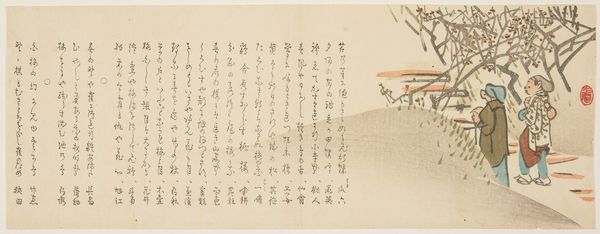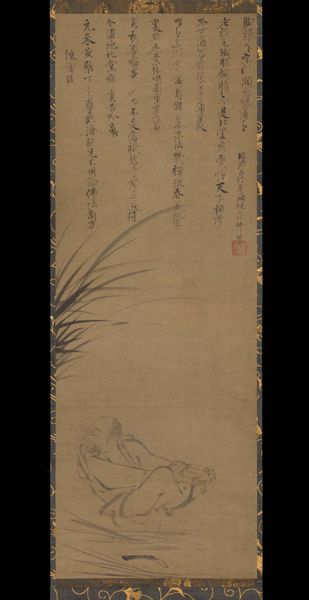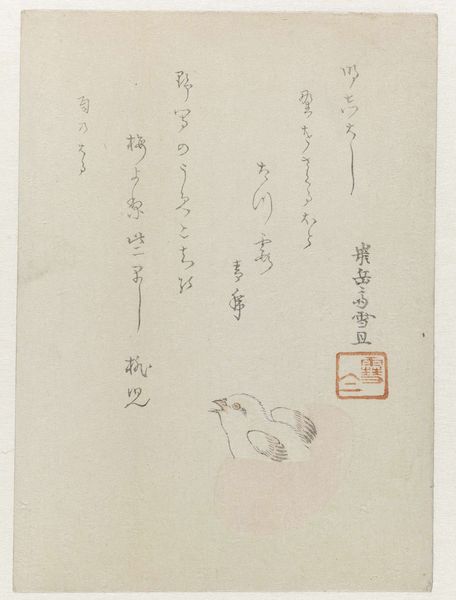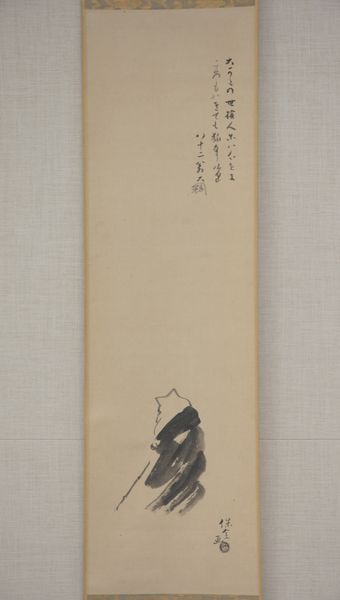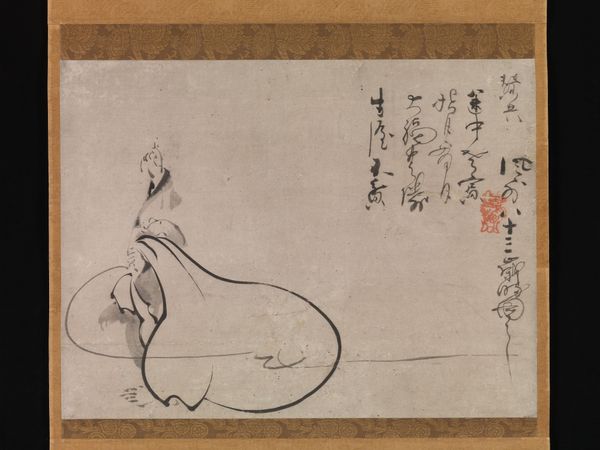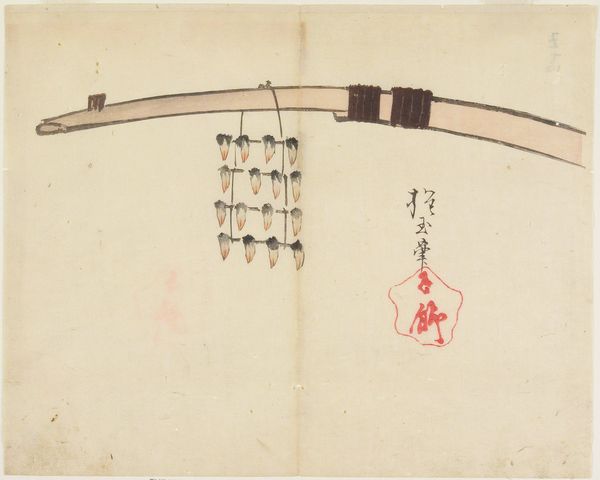
drawing, painting, paper, hanging-scroll, ink
#
drawing
#
water colours
#
painting
#
asian-art
#
landscape
#
ukiyo-e
#
japan
#
paper
#
hanging-scroll
#
ink
#
folk-art
#
orientalism
#
line
#
watercolor
Dimensions: 49 7/8 × 18 in. (126.68 × 45.72 cm) (image)20 7/8 × 24 1/4 in. (53.02 × 61.6 cm) (mount, without roller)
Copyright: Public Domain
Curator: Let’s consider “Japanese Tit and Wisteria,” a hanging scroll in ink and watercolor attributed to Nagasawa Rosetsu from around the 18th century, currently residing here at the Minneapolis Institute of Art. Editor: The starkness hits me immediately. So much empty space—or perhaps, better put, pregnant space? The composition teeters between sparseness and profound anticipation. Curator: It’s a fascinating example of how Edo period artists responded to increasing urbanization and a burgeoning merchant class, shifting from patronage of the elite towards a broader public. Rosetsu himself moved from Kyoto, embracing this broader artistic market. Editor: The dynamic line work is what captures my attention. Look how the single, unwavering line of the wisteria tendril bisects the composition, almost daring in its simplicity. The calligraphic quality creates this wonderful tension. Curator: That simplicity, of course, is deceptive. Rosetsu's hand wasn't untrained; he had been a student of Maruyama Okyo, founder of the Maruyama school, whose innovations with realism were quickly gaining traction, moving Japanese painting away from Chinese traditions. Editor: I’d be curious to dive into the semiotics here. The small bird is rendered so precisely against that near void and rigid vine. It’s almost defiant in its vitality. Curator: Precisely. Rosetsu was incredibly skilled at merging that kind of realism with decorative elements, perfectly crafted to appeal to his growing consumer base in burgeoning urban environments. The artist successfully married nature and commerce. Editor: I'm especially moved by how such minimal elements produce a work charged with symbolism and visual ingenuity, something the Japanese have really pioneered in many areas of their aesthetic vision. It’s about evoking mood. Curator: Absolutely, a dance between form and cultural meaning, highlighting the socioeconomic factors at play. Editor: It provides us, at least in this particular context, with a way to frame nature, aesthetics, society, and the individual. A beautiful dialogue we’ve entered today by way of art.
Comments
No comments
Be the first to comment and join the conversation on the ultimate creative platform.
